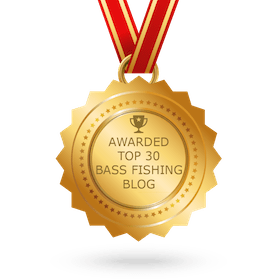Florida Strain Bass Stocking In Pickwick Lake
Pickwick Lake in North Alabama has long been a stronghold for smallmouth bass for years. The stocking of the Florida strain of largemouth bass by Alabama, Mississippi, and Tennessee fisheries agencies indicates a possibility for the consistent over-10-pound class of largemouth bass in Pickwick.

The Northern Strain of largemouth bass normally maxes out at around 10 pounds while the Florida Strain can soar to 20 pounds and more. When the stocking of the Florida Strain matures, had you rather catch a six-pound smallmouth or a 15+ pound Florida strain largemouth?
The hybridization of the Northen strain and Florida strain is created by the cross-spawning of the different strains. This hybridization results in a larger population of bigger largemouth bass in an impoundment.
The survival rate of spawns is incredibly low and an important factor that affects the success of the stocking programs. During the spring spawning season, dozens of species of juvenile fish all compete for food and space at the same time, thus survival of young bass in the wild is very low. Adult bass attempt to circumvent this fate by producing excessive amounts of offspring, but the reality is that very few young bass survive (often less than 1/2%) their first year of life. Since hatchery-stocked fish are subjected to the same environmental conditions
as naturally spawned fish, they also suffer very high rates of mortality. In fact, stocked bass frequently have higher mortality rates than resident fish, since they must orient and acclimate to their new surroundings.*
 Will you be able to distinguish between a Northern bass and Florida Strain largemouth you just boated? Aside from a much larger size, you will probably not know which largemouth you caught. Why? Fisheries agencies explain why-Because of the hybridization mentioned above, it is difficult to identify a “Florida strain” largemouth in the field without the help of advanced genetic analysis. Northern strain bass rarely exceeds 10 pounds, and they are more willing to chase down baits in open water. Florida strain largemouths have the genetic ability to potentially exceed 20 pounds, and they tend to be more ambush-focused as they originate from shallow waters with thick cover.
Will you be able to distinguish between a Northern bass and Florida Strain largemouth you just boated? Aside from a much larger size, you will probably not know which largemouth you caught. Why? Fisheries agencies explain why-Because of the hybridization mentioned above, it is difficult to identify a “Florida strain” largemouth in the field without the help of advanced genetic analysis. Northern strain bass rarely exceeds 10 pounds, and they are more willing to chase down baits in open water. Florida strain largemouths have the genetic ability to potentially exceed 20 pounds, and they tend to be more ambush-focused as they originate from shallow waters with thick cover.
All three states sharing Pickwick Lake have contributed to the introduction of Florida-strain bass into the lake. Southern Fishing News reached out to the state agencies involved and received a detailed response to the question regarding the stocking of the largemouth bass Florida strain in Pickwick.
Alabama ADCNR (Fisheries)
Alabama last stocked Florida strain bass in Pickwick in 1993. “The ADCNR (Fisheries) conducts bass spawn checks on a regular basis and all black [bass]species are reproducing sufficiently to maintain stocks,” said ADCNR Phil D.Ekema, District Fisheries Supervisor. Alabama stocked 100,000 Florida bass in 1993 to incorporate the Florida gene into the population.
What is an “F1Hybrid” largemouth bass and are they superior? An F1 hybrid is simply a term to designate a first-generation cross between a Northern and Florida largemouth bass. These offspring of mixed genetics have also been given other appealing coined names for marketing purposes. F1 hybrids have shown greater growth characteristics over Northern largemouth bass due to a phenomenon known as “hybrid vigor”, but this growth advantage does not persist. This is especially true in populations where both Northern and Florida largemouth bass genes already exist, like most Alabama public water bodies.
 The state of Alabama’s program of stocking the Florida bass several decades ago spans almost every reservoir in the state. WFF was one of the first state agencies to begin stocking Florida largemouth bass and over 17 million have been stocked since the early 1970s. These stockings occurred before social media and other internet platforms were prevalent; thus, most people do not even realize they occurred. The goal of these stockings was not to increase bass abundance, but rather to alter the genetics of native Northern largemouth bass and increase the potential for larger fish to be caught by anglers.
The state of Alabama’s program of stocking the Florida bass several decades ago spans almost every reservoir in the state. WFF was one of the first state agencies to begin stocking Florida largemouth bass and over 17 million have been stocked since the early 1970s. These stockings occurred before social media and other internet platforms were prevalent; thus, most people do not even realize they occurred. The goal of these stockings was not to increase bass abundance, but rather to alter the genetics of native Northern largemouth bass and increase the potential for larger fish to be caught by anglers.
The results of this program were very inconsistent, but the successful introduction of Florida genes was documented in some locations, such as Lake Guntersville. Once Florida largemouth bass genes are abundant in a population, the continuation of stocking this subspecies is unproductive. *SOURCE: ADNR (Fisheries) and Q&A: Public water bass stockings: FAQ (ADNR)
Mississippi MDWFP
The MDWFP stocked their area of Pickwick with Florida strain bass on May 24, 2023. Approximately 90,000 Florida strain Largemouth Bass were released.
Time and survival rate of the Florida strain bass released will determine the success of the project. Placed in an optimum environment with suitable habitat and abundant forage it is not uncommon for Florida bass to reach 14 inches in two years and to stack on one pound a year thereafter, possibly more.
Tennessee TDRA
The Tennessee Wildlife Resources Agency (TWRA) was joined by local fishermen, middle and high school anglers, coaches, and mentors passionate about bass fishing to help stock Florida strain largemouth bass fingerlings in Pickwick Lake on Monday, June 12, 2023.
Approximately 21,000 Florida strain largemouth bass fingerlings were stocked in four locations from the Tennessee, Mississippi, and Alabama state lines to Pickwick Dam.
TWRA has focused on genetics by introducing Florida largemouth bass at Pickwick and other popular waters, such as Chickamauga Lake and Kentucky Reservoir. These Florida largemouth bass stockings will not improve the density of the bass populations. Still, they will hopefully improve the bass genetics, which will produce larger, high-quality bass populations, as has been done on Chickamauga Lake.
Many states have tried to grow bigger bass by stocking millions of Florida strain largemouth. Some states, most notably Texas and California, achieved outstanding success with that effort.
However, keep in mind that additional stocking of Florida strain bass where the hybrid gene already exists makes the continuation of stocking this subspecies unproductive according to ADCNR (Fisheries). And. Alabama has released 17 million Florida bass over the years into public waters-including Pickwick.
Keep your fingers crossed I guess.











